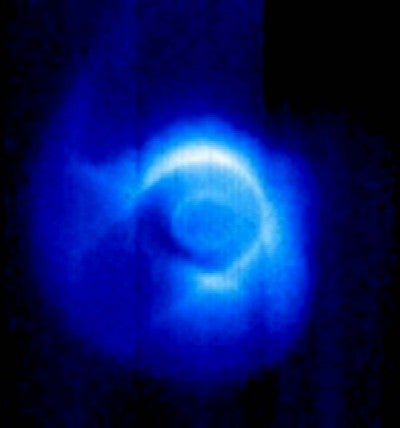It has been 35 years since humans last walked on the Moon, but there has been much recent discussion about returning, either for exploration or to stage a mission to Mars. However, there are concerns about potential radiation danger for astronauts during long missions on the lunar surface.
A significant part of that danger results from solar storms, which can shoot particles from the Sun to Earth at nearly the speed of light and can heat oxygen in the Earth’s ionosphere and send it in a hazardous stream toward the Moon.
Earth is largely protected by its magnetic field, or magnetosphere. Now, new University of Washington research shows that some parts of the Moon also are protected by the magnetosphere for 7 days during the 28-day orbit around Earth.
“We found that there were areas of the Moon that would be completely protected by the magnetosphere and other areas that are not protected at all,” says Erika Harnett, a UW assistant research professor of Earth and space sciences.
Solar energetic particles, which are generated during solar storms, carry enough energy to disrupt communications on Earth or even kill satellites in Earth orbit. During those same storms, particles from Earth’s ionosphere, primarily oxygen, also can become significantly energized. Though they are not as powerful as solar energetic particles, they still pose a significant threat to astronauts working on the moon, or even en route to Mars.
Using computers to model properties of the magnetosphere, Harnett found that while solar storms can increase the danger from ionosphere particles hitting the moon, they also trigger conditions in the magnetosphere that deflect many hazardous solar particles.
Particles with high enough energy can pass directly through a human without much damage, Harnett says, but particles packing slightly less oomph, though unfelt by a human, can lodge in a person. Typically it’s not just one particle, but many, and the accompanying radiation can damage cells, she says.
In the longest missions of NASA’s Apollo Program, astronauts spent just a few days on the Moon. The last mission, Apollo 17, was launched December 7, 1972, landed on the Moon on December 11 and arrived back on Earth on December 19.
“During Apollo, people were not on the Moon for very long so there wasn’t the concern about the radiation hazard to humans as there is with longer missions,” Harnett says.
Today there is much greater understanding of the danger posed by solar energetic particles, particularly because of the adverse effects they can have on satellite communications during periods of intense solar flare activity.
“The problem is that we can’t predict when this activity is going to take place so we can’t warn astronauts to take shelter, so they could be vulnerable when the Moon is outside the magnetosphere,” Harnett says. “The particles travel near the speed of light, so when we see them generated on the Sun’s surface they will arrive in a few minutes and there is little time to react.”
The new research could help determine when it is safe for astronauts to work far from a lunar base, she says. But she adds that models used in the work suggest that energetic oxygen from Earth’s ionosphere also poses a danger, even though it is less energetic than solar particles.
“It wouldn’t kill someone instantly, but it definitely could increase the radiation exposure for an astronaut on the Moon,” Harnett says.
However, she notes that the danger from energetic oxygen could be overstated because the models do not take into account the positive electrical charge on the daylight side of the Moon that likely would significantly slow the oxygen stream.










